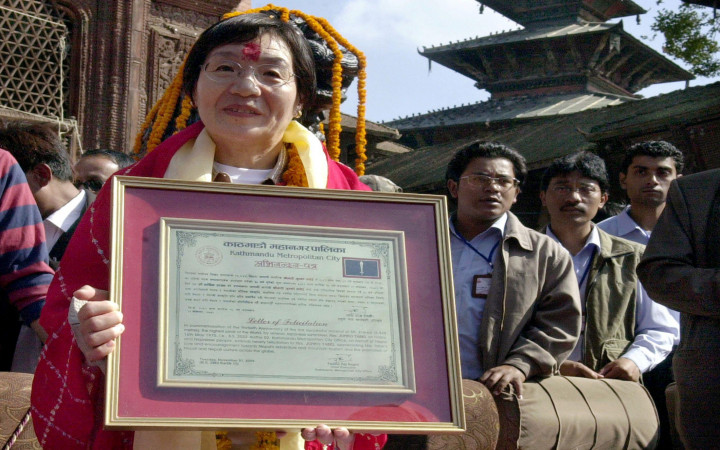Today’s Wonder of the Day was inspired by Dylan. Dylan Wonders, “Who was Junko Tabei?” Thanks for WONDERing with us, Dylan!
Imagine standing on top of the world. That’s right, we’re talking about Mount Everest! With the highest altitude on the planet, this mountain is a sight to behold. From its summit, you can see the tops of clouds. Other nearby peaks of the Himalayan mountain range are also visible.
How many people have reached the top of the world’s highest mountain? As of April 2021, just over 4,000. Today’s Wonder of the Day is about the 36th person—and first woman—to do so. Her name? Junko Tabei!
Junko Tabei was born in Mihur, Fukushima (Japan) in 1939. When she was 10 years old, she went on a class trip to Mount Asahi and Mount Chausu. That’s when she fell in love with mountain climbing. It was a passion that would continue for the rest of her life.
In college at Showa Women’s University, Tabei studied literature and education. She also joined mountain climbing clubs, looking for people who shared her interest. She was often the only woman in these groups.
Most of the men in Tabei’s mountain climbing groups did not welcome her. Some refused to climb with her because of her gender. Others challenged her interest in climbing, accusing her of only joining the groups to find a husband. However, a few club members did invite Tabei on climbing trips.
In 1969, Tabei founded the Ladies Climbing Club. This group was for women who, like Tabei, were interested in mountain climbing and wanted to grow their skills. In 1970, the group climbed Annapurna III, which Tabei summited. That’s when she decided that Everest was next.
Tabei and 14 other women from her club formed the Japanese Women’s Everest Expedition. The group began preparing for their climb by training and looking for sponsors. However, the search for funding presented its own challenges. Most sponsors who were known for funding mountain climbers turned them down. They told the women that they had no business in climbing and should be at home raising children instead.
Regardless, the group did receive meager support from a few sponsors. Their low funds would make the climb even more difficult. Still, they were determined to summit the world’s highest mountain. In 1975, the Japanese Women’s Everest Expedition began their climb up the mountain.
Low funds and discrimination weren’t the only challenges the team would face. At 9,000 feet up Mount Everest, they were overtaken by an avalanche. The sherpas were able to pull every team member from the snow, but Tabei was injured. She couldn’t walk for two days.
On the third day, though, Tabei rose and continued her climb. 12 days after the avalanche, she became the 36th person and first woman to summit Mount Everest. Just 11 days later, a Tibetan woman became the second.
Tabei didn’t stop with Everest. By 1992, she had climbed the Seven Summits—the highest mountains on each continent. These include Everest, Aconcagua, Denali, Kilimanjaro, Elbrus, Mount Vinson, and Carstensz Pyramid. Tabei was the first woman to reach the top of all seven.
In 2012, Tabei was diagnosed with cancer. Still, she kept climbing. Tabei passed away on October 20, 2016. She left behind her husband, who was also a mountain climber, and their two children. In 2019, a feature on Pluto was named for her—Tabei Montes.
What do you find most interesting about Junko Tabei’s life? Do you dream of climbing mountains one day yourself? We hear the view from the top of Mount Everest is a WONDER to behold!
Standards: C3.D2.His.2, CCRA.R.1, CCRA.R.2, CCRA.R.4, CCRA.R.10, CCRA.L.1, CCRA.L.2, CCRA.L.6, CCRA.L.3, CCRA.W.2, CCRA.W.4, CCRA.SL.1, CCRA.SL.2




